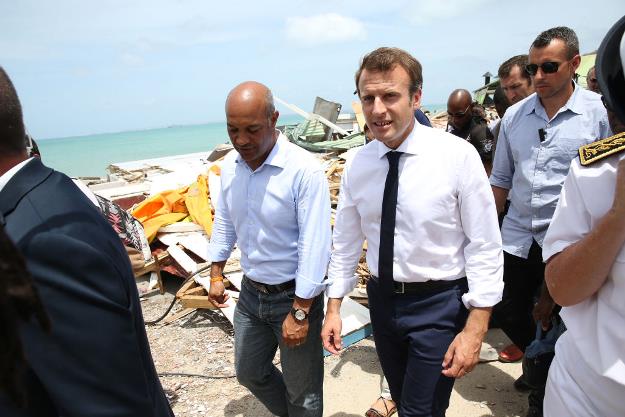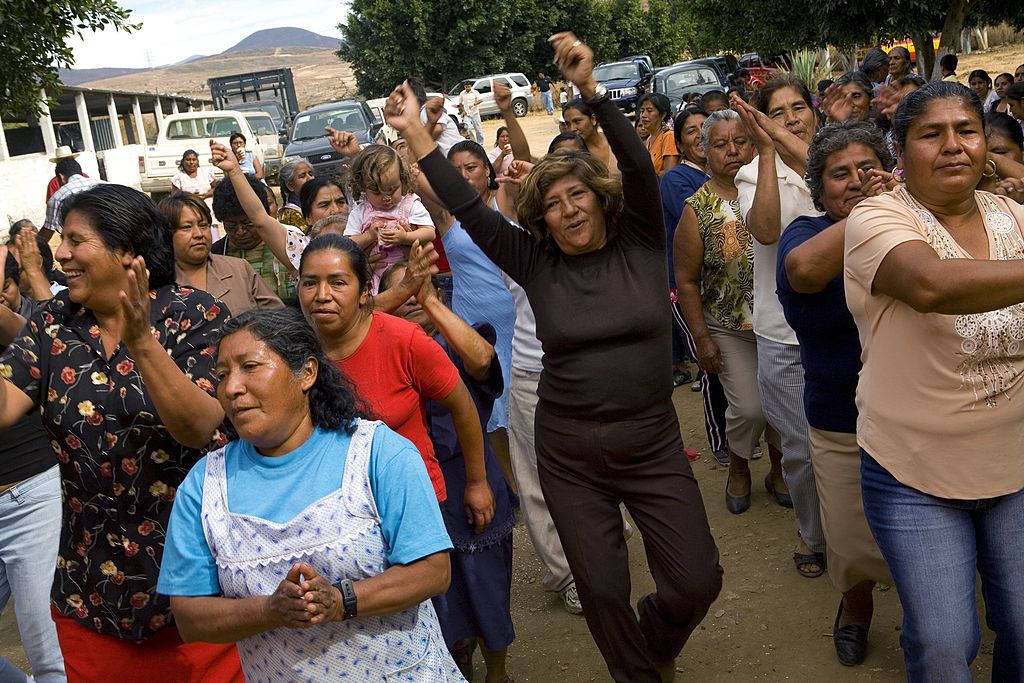As Hurricane Irma blew through the Caribbean last week, it passed over a mishmash of full-fledged nations, overseas territories, and quasi-independent jurisdictions that reflect the varied legacies of colonial powers. The storm treated them with a vicious caprice – sparing some and devastating others – that to a large degree will determine where humanitarian and reconstruction needs are most acute.
But a manmade factor will also be at play. The varied histories and forms of government of the region will help determine how individual islands are able to recover and rebuild after the storm, offering lessons in governance and disaster relief that should echo far beyond the region itself.
Take two examples: Antigua and Barbuda and the U.S. Virgin Islands. Nearly every building on Barbuda was damaged by the storm and most of the island’s residents were evacuated to neighboring Antigua. The twin-island country is a member state of the Caribbean Community (CARICOM), the region’s political and economic union, so it is a prime beneficiary of regional aid. As an independent nation, it’s also eligible for international relief from the United Nations – overseas territories are not. Already, the Caribbean Catastrophic Risk Insurance Facility has authorized $6.8 million for the country as part of payouts it will also make to St. Kitts and Nevis and Anguilla.
By contrast, residents of the U.S. Virgin Islands – St. Thomas, St. Croix, and St. John – felt forgotten in the immediate aftermath of the storm. The National Guard did not arrive immediately; boats evacuated some, but did not bring enough supplies. Several days of sustained pleas on social and traditional media led President Trump to increase federal funds and cost-sharing for relief and recovery; Trump is now expected to visit the islands in coming days. But once Irma began to threaten the southeastern U.S. mainland, Washington’s attention moved on from the Caribbean territories. If the U.S. federal government does come around to providing sustained long term reconstruction assistance, the U.S. Virgin Islands may eventually be better off than Antigua and Barbuda given that the U.S. economy dwarfs that of CARICOM. But as one-half of an independent nation, Barbuda doesn’t have to play second fiddle to a bigger neighbor when it comes to getting the government’s attention.
The British Virgin Islands have suffered a similar fate as their U.S. counterparts. The sun has indeed set on the British empire, leaving the UK’s remaining overseas possessions an afterthought. As a result of a lackadaisical response in the days before Irma hit, the UK was rightly criticized for not anticipating relief needs as effectively as the (still imperfect) French and Dutch efforts. Foreign Secretary Boris Johnson has been on the ground to make amends. (Anguilla is both a British possession and a CARICOM member, so it at least will receive some of the Caribbean insurance facility payouts.)
If any country stands out in the post-Irma aftermath, it’s Cuba, where disaster preparedness and emergency management, especially for hurricanes, is a national priority. The UN cites the country as a global model. But Cuba’s territory is also much larger than the small Leeward Islands, making for an uneven comparison. Nevertheless, it’s impressive that despite tremendous flooding, damage, and loss of life, the Cuban government still managed to dispatch a corps of its world-famous doctors to help its smaller neighbors in the Caribbean.
All this to say that, despite their proximity and similar experiences with the storm, the islands of the Caribbean are not equally ready for what comes next. In the case of half-French, half-Dutch, 37-square-mile Saint Martin/Sint Maarten, one of the worst hit by Irma, those differences play out on the same island. This offers a microcosm of the Caribbean’s fragmented political governance, especially vis-à-vis relationships with distant capitals.
In 1946, France made its overseas Caribbean territories integral parts of the country. Residents have French passports and use the euro. Currently, the northern half of Saint Martin and all of nearby Saint Barthélemey are French overseas collectivités. Until 2003, they were municipalities of a larger department, Guadeloupe. Under this new arrangement, they have one deputy and one senator in Paris.
While a small voice in the French legislature, their direct political representation and full citizenship will unquestionably help galvanize recovery efforts. On Sept. 12, French President Emmanuel Macron traveled to Saint Martin to inspect relief efforts, which have been hampered by looting and social unrest. The Caisse Central de Reassurance, France’s public insurance corporation, estimates losses at 1.2 billion euros ($1.4 billion), making the hurricane the most expensive natural disaster on French soil in 35 years. But the backing of the French state will prove a boon and a reliable source of reconstruction funds in the months and years to come.
That experience may be different on the Dutch side of the island. In 1954, the Dutch possessions in the Caribbean became a “constituent country” within the Kingdom of the Netherlands. In 1986, Aruba seceded and became its own constituent country, paving the way for the entire political structure to dissolve in 2000, with the other Dutch islands each holding a referendum on their future. Bonaire, Sint Eusatius, and Saba chose to integrate into Holland, similar to the French possessions. Sint Maarten and Curaçao went Aruba’s route, called “status aparte.” Since those decisions were ratified in 2007, Sint Maarten has received less money from Holland but also been given more leeway to manage internal affairs.
Ten years on, that structure will be severely tested. Under normal circumstances, that flexible structure has largely worked as a way to resolve tensions between the former colonial capital and the overseas territory. In times of crisis, the ambiguity is worrisome.
Sint Maarteners are Dutch citizens and will receive immediate humanitarian aid. Dutch soldiers have been on the ground for several days to distribute supplies and restore law and order, and the EU authorized 2 billion euros in emergency aid. But the island’s future reconstruction prospects are less secure. It’s unclear if the Dutch southern half of the island is even eligible for long-term EU funding, though the French northern half definitely will be. King Willem-Alexander visited the island but made no firm pronouncements about reconstruction other than to praise relief efforts thus far.
The big question is if Dutch or French reconstruction will come with strings attached. The open-border duty-free island’s sin city reputation – glitzy casinos, luxury clothing and jewelry stores, all-night parties – comes with vast wealth inequalities. Cheap labor has poured in from other parts of the Caribbean like the Dominican Republic, Haiti, and Jamaica, but the minimum wage is under $5 an hour on an island awash in tourist wealth. Immigrants don’t receive the full benefits of French or Dutch citizenship like compulsory schooling for children. A 2014 study put the French side unemployment rate at 30 percent and a 2009 general strike in the French Antilles highlighted the escalating cost of living for overseas citizens.
The full extent of the social unrest on Saint Martin/Sint Maarten is unclear, but if there is a grain of truth to social media reports of bands of armed looters robbing hotels, it’s an alarming indication that social conditions need to change. The memory of the post-Irma aftermath will haunt subsequent negotiations between Marigot (French side capital) and Paris, as well as Philipsburg (Dutch side capital) and The Hague.
In the case of French Saint Martin, full citizenship will give locals political leverage to demand investment that will improve social conditions. But the migrant crisis on continental Europe will also likely cause French and EU officials to look more closely at immigration to the island. In the case of Dutch Sint Maarten, sympathetic PR like the king’s visit can hopefully be leveraged into long-term reconstruction, but The Hague might exert more political control than locals want after a decade of semi-autonomy. For France, full citizenship on paper must now be translated into full citizenship in practice. For the Netherlands, the ambiguous arrangement of status aparte, just like another odd political construction, Puerto Rico’s estado libre asociado, is once again a reminder that the Caribbean remains politically nebulous, sometimes to the region’s detriment.
—
Scruggs is a freelance journalist who writes about cities and culture in the Americas.






